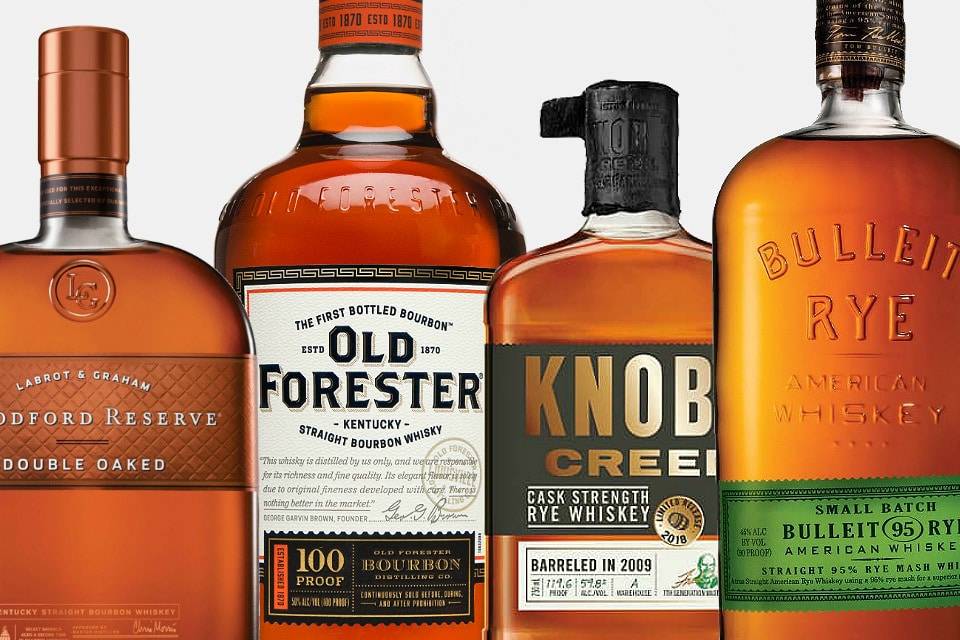
There’s a fickle rumor going around that bourbon is not bourbon unless it originated in Kentucky. Check out our article on the ABV formula to find out more. Aged in a charred oak barrel until it has no more than 62.5% ABV.Īll whiskeys have ABV standards however, each will be different and most don’t have a maximum or minimum required ABV.Bourbon must be distilled at 80% ABV or less.When barreling bourbon, it has to meet a minimum ABV to be considered bourbon: ABVĪBV, or alcohol by volume, is a measure of how much alcohol is in an alcoholic beverage. 100% pure bourbon whiskey has to have aged in charred oak barrels for at least two years. Any other whiskey can be aged in any barrel seen fit commonly port, sherry, and types of rum casks are used to age non-bourbon whiskeys. For this reason, bourbon has a distinct taste that most will identify as tasting fresh and aged. BarrelsĪnother quality bourbon has is that it's aged in charred oak barrels that don't contain extra dyes or colors–they must be all natural.

Ever wonder why bourbon is sweeter than other brown liquors–well, you have the corn to thank for that. In order to be a bourbon, whiskey needs to be derived from grains or mash that contain at least 51% corn. But the fermentation process isn't what distinguishes the types of whiskey. Whiskey is a spirit based drink made from fermented grains, it’s then aged in wooden or Oak barrels. One key difference between bourbon and whiskey is how they’re manufactured. When using it in a cocktail, try rinsing your glass with it it adds a great nose and doesn’t overpower the rest of your ingredients.Key differences between Bourbon and Whiskey Corn But if you’re scared to take the plunge, Seigel recommends taking baby steps: “Start with a less smoky Scotch (something from the Highlands maybe I happen to really like Highland Park-and stay away from Islay if you aren’t ready for lots of peaty smoke). If you already like bourbon and rye whiskey, then moving on to Scotch is the obvious next step. linear is how I tend to think of bourbon vs. I tend to think of tastes in terms of shapes and colors sometimes, so round vs. The main difference I’d say is sweetness as previously stated, bourbon is sweeter and more round, where rye, to me, is a grain that’s a bit spicier or more peppery and is more linear. I like my Old Fashioned a little on the sweeter side, hence the corn vs. But aside from the grain and origin technicalities, what’s the difference between bourbon, Scotch, and rye? Taste.Ĭelebrity mixologist Matt Seigel, a former bartender at New York’s Eleven Madison Park and owner of the In the Spirit Of Hospitality group, discusses the differences between bourbon and rye, saying: “I happen to prefer bourbon for my Old Fashioned and rye for my Manhattan. It is often used as a substitute for bourbon and adds a spicy flavor to a cocktail.

Rye is another type of whiskey that is made from a mash that contains at least 51 percent rye, and is less sweet than bourbon. In the past five years, production of bourbon has increased by more than 115 percent with many artisanal brands and small batch distilleries opening throughout the state. Kentucky is the home of the nearly $9B bourbon industry, and there are almost 70 distilleries based there as of 2018. Bourbon was declared by Congress to be America’s only native spirit in 1964 and as an indigenous product of the United States, it can’t be sold as “bourbon” if it’s made in any other country.īourbon is a drink that’s often associated with the South (especially Kentucky) and has been around since the mid-1800s. The charred barrels are especially important and contribute greatly to the taste of the spirit.

Bourbon must be produced in America and needs to confirm to the following standards to be officially labeled and sold or exported as bourbon: it must be made from a grain mixture that’s at least 51 percent corn aged in charred oak barrels contained in the barrel for aging at no higher than 125 proof and bottled at 80 proof or higher.


 0 kommentar(er)
0 kommentar(er)
